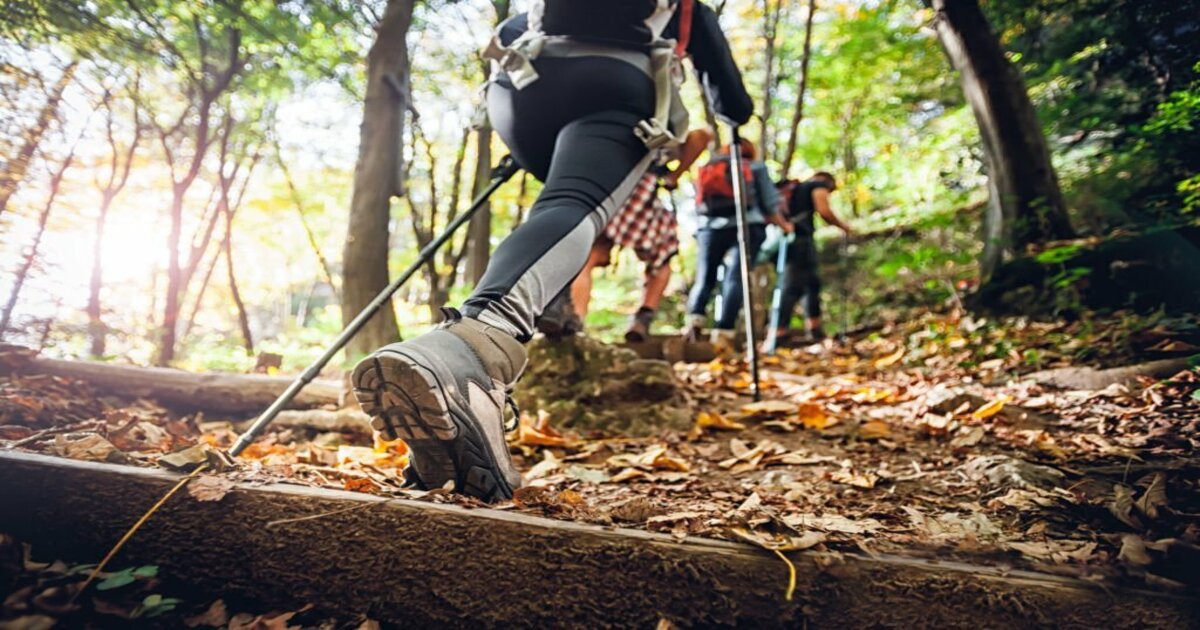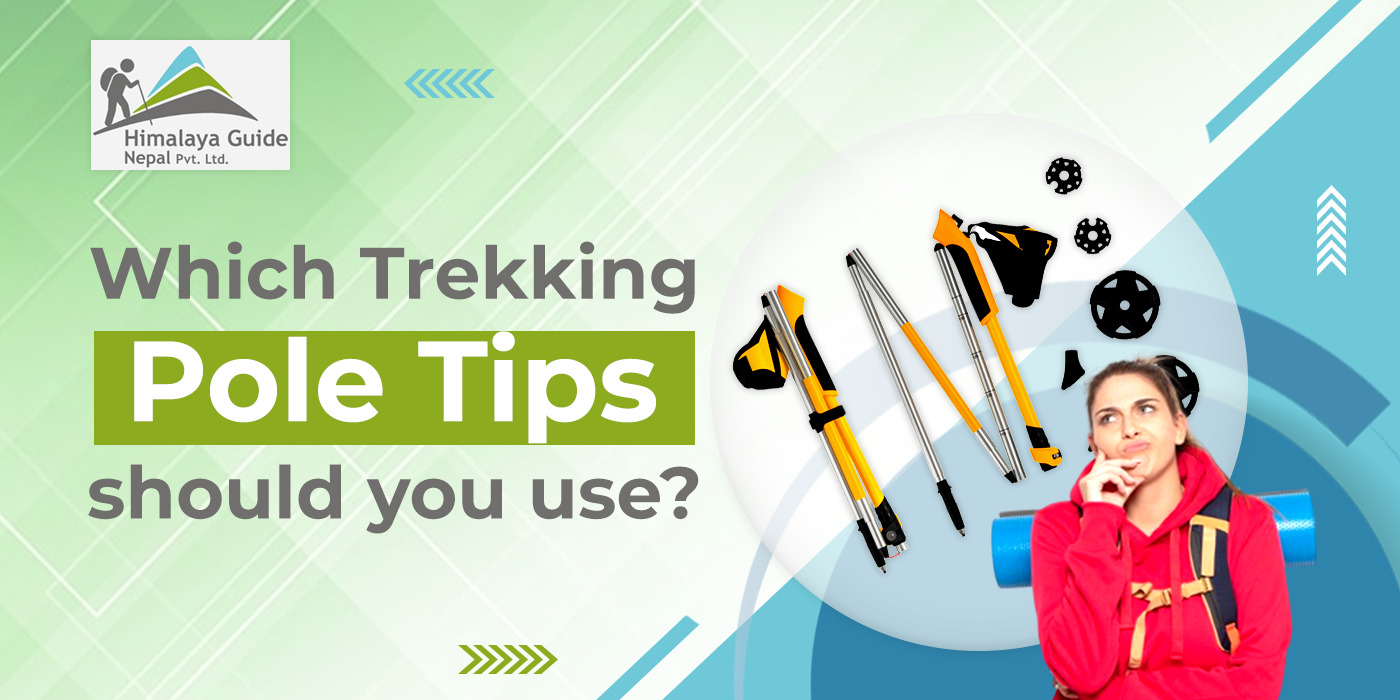So which Trekking Pole Tips should you use? What are the advantages of trekking poles? Trekking poles have long been a useful tool for serious hikers. Trekking poles have particular advantages even on easy hikes, in addition to offering stability when carrying a heavy weight or navigating uneven terrain. When going downhill, they greatly lessen the weight and stress on the hips, knees, and ankles and are excellent for establishing a rhythm.
As with other hiking and backpacking equipment, weighing weight versus durability is a prevalent factor.
It is therefore not surprising that many hikers and hiking staffs decide to bring a pair of shoes along with them on their outdoor excursions. But until and unless you are familiar with every part of your trekking poles, including the tip and basket, you won’t be able to get the most out of them.
What Are the Types of Trekking Pole Tips?
Knowing when and how to use these trekking pole attachments will enable you to hike securely in all four seasons and on a range of surfaces, even though there is no strict trekking information or guidelines for the right method.
Here are our top selections for trekking poles for 2022, which range from collapsible and ultralight options to robust versions for high-mountain excursions.
1. Rubber Tips
There is no doubt that rubber tips are renowned for their adaptability and for their grip and stability on slick surfaces. When it comes to hiking, it is the most frequently employed tip. On paved surfaces, rubber tips perform better than metal tips at absorbing shock and vibration.
Instead of carbide tips, rubber tips do less damage to trails, making them the best option for sensitive environmental areas. When you travel or store your trekking poles, they also provide good protection. Even the sound that your poles create while you’re on the trail can be diminished with rubber tips.
2. Carbide Tips
If durability is what you’re after, invest in trekking poles with carbide tips. Carbide tips are incredibly resilient and can withstand abuse during protracted camping journeys. It offers the best traction on a range of surfaces, such as ice, pebbles, or dirt. In rocky terrain, poles with carbide tips work best since they can easily penetrate the rock.
The fact that carbide tips make a lot of noise and vibration is a significant disadvantage. The minor inconvenience may cause hikers who prefer to avoid unnecessary noise on their trek. Additionally, consider that your travel bag may occasionally become damaged by carbide tips.
3. Rubber Feet
Rubber Feet, made to propel you forward and increase stability, are also known as “fitness rubber tips.” Using these rubber feet, you can speed up and gain momentum while falling off the course. Additionally, they aid in improving grip and help your poles absorb specific shocks.
On flat and rocky areas, trekking poles with exposed metal tips are prone to slipping. But rubber feet can stop that from happening. By doing this, you can also prevent your trekking poles’ carbide tips from getting damaged. While trekking or walking on hard surfaces like paved roads and rough terrain, rubber feet are an option.
4. Mud Baskets
You must fasten mud baskets to your hiking poles if your path may pass through areas with mud or thick grass. These baskets will assist prevent mud from splashing into your clothing and preventing you from sinking too far into the mud.
Mud baskets give extra support to prevent the trekking poles from sinking too far into the loose ground, making it more straightforward for you to utilize them.
5. Snow Baskets
Do you frequently go hiking in the winter on snow-covered trails? If you have trekking poles, think about adding snow baskets! Like snowshoes, snow baskets aid in support and buoyancy to prevent slowing down from your poles sinking into deep snow. Because they are created expressly for terrains with at least a few feet of snow, snow baskets are often significantly wider than mud baskets.
Note: It should be noted that bigger baskets may entangle plants and roots when fastened to poles.

Some other Trekking Pole Tips
Nevertheless, there can be specific tips that are incompatible with your pole. If so, you might need to contact the company who made your pole and ask them for replacement tips. Generally speaking, according to our experience, trekking pole tips are a little on the small side to fit a variety of walking poles.
Therefore, apply a little powder to make them simple to remove when attaching new tips to new poles. You won’t need to do this again when your pole tips become soiled.
1. Simple Trekking Pole Advice
The standard hiking pole tips, commonly referred to as trail feet, are ideal for walking over slick rock and paved surfaces. These tricky rubber tips are made to last to wear underneath your carbide-tipped walking poles on looser, less level ground.
They can be worn with the trail baskets to keep your poles from sinking into the softer, looser ground and help you grip more rough ground on a range of trails. These tips protectors are great for storing on walking poles when not in use because they fit easily in your pocket or backpack.
2. Extra-Durable Trekking Pole Tips
These extra-durable replacement tips were developed for walking on hard-core trail conditions as well as tarmac, sand, and gravel. These rubber tips, which have been vulcanized, are ideal for Nordic walking, street walking, beach walking, trail hiking and trekking, and other activities where you don’t want your metal tips to make contact with hard surfaces.
Extreme and dedicated hikers who do not wish to frequently replace their essential hiking pole tips throughout a long journey utilize them.
3. Bell-Shaped Trekking Pole Tips
The bell-shaped tips offer the most incredible stability possible to those for whom maintaining balance and preventing falls is a particular issue or worry.
These bell-shaped tips, often known as balancing tips, significantly increase stability for pole users with limited mobility. They have a rubber construction and offer excellent traction on hard surfaces inside and outside.
4. Fitness Trekking Pole Tips
They are often referred to as road feet or “boot” tips rubber, and Nordic walkers frequently use them. They are made of premium rubber that is soft but durable, making them ideal for sidewalks, roads, and pavement.
Nordic power walking on pavement is an easy and enjoyable approach to getting a full-body workout. It was initially developed as a summer training program for cross-country skiers.
These exercise walking rubber tips offer traction on rough terrain and enable a powerful pole push-off, enhancing your upper-body training. As you walk, this tips rubber point should be facing backward. Exercise walkers give propulsion as well as comfort.
Wrap Up!
It isn’t complicated science! On every terrain, having a pair of trekking poles with the proper tip and basket will be helpful. However, they do assist in distributing your energy consumption in a way that may improve your walking or trekking endurance.
Since you’ll work your arms more than you would if walking without trekking poles, employing hiking staff and walking poles won’t reduce your overall energy expenditure. However, they do assist in distributing your energy consumption in a way that may improve your hiking and trekking endurance.

